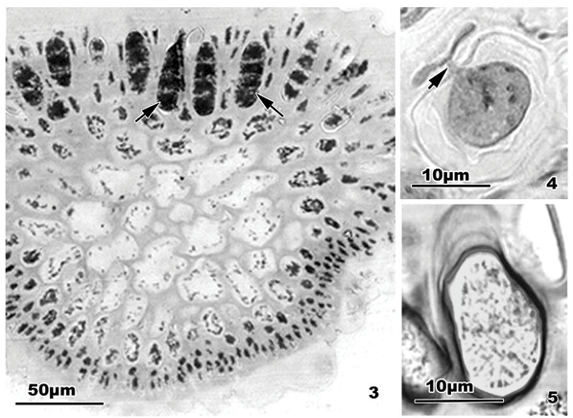Tetraspore development was studied in Hypnea musciformis (Wulfen) J. V. Lamour. using light and electron microscopes, and techniques of histochemistry. Tetrasporangial differentiation arises from a cortex cell that enlarges. This cell undergoes mitosis to form a tetrasporangial mother cell and a stalk cell. The histochemichal study indicated that the cell wall layers are composed mainly of acidic polysaccharides, reacting with toluidine blue O, alcian blue and alcian yellow. The tetrasporangial mother cell is also stained with periodic acid Schiff, that detect neutral carbohydrates, and with coomassie brilliant blue, that detect proteins. The transformation of cortical cells into mature tetrasporangia involves a series of structural changes, especially of the chloroplasts and dictyosomes. The tetrasporangial mother cell rapidly becomes elongated, and a distinctive cell wall is formed before the onset of meiosis. During this elongation phase there is also an increase in the number of chloroplasts. The meiotic tetrasporocyte is characterized by extensive development of the perinuclear endoplasmic reticulum. Throughout meiosis, there is a continuous replication of chloroplasts as well as a synthesis of starch and the formation of vesicles with electron-dense contents. Cytokinesis begins with the formation of the cleavage furrow, produced by the infurrowing of the plasma membrane. This cleavage furrow formation is followed by mucilage deposition surrounding the tetraspores.
polysaccharides; subcellular organization; tetrasporogenesis







